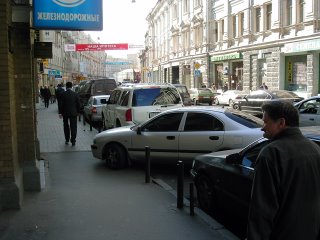When Appearances are Better Than the Real Thing
During August and September, when I had my language training, I was at the office only in the afternoons. In part of October, I was completely absent during the fellowship program orientation. As a result, not a lot of people outside of the investment staff were able to figure out who I was or what I did.
On my first day back in the office, I discovered that I had been displaced. The company hired a new portfolio manager and all the investment staff shifted one seat down on the trading desk. Which bumped my part-time spot off the desk completely. So, I had to find a place until my afternoon meeting with the CEO.
The company has been growing like a weed this year so its pretty hard to find open space. I went into a conference room and found that it had been converted into workspace for 2 people. But I was stuck at this point – so I asked if I could sit on their couch. They were a bit surprised at the request at first, but assented. It was a comfortable spot for me, but I could sense that my colleagues weren’t really sure what to make of my presence there.
Then the boss came by – all 6’6” of him – loudly shouting my name in his quest to find me. I nearly jolted my neighbors out of their seats when I shouted back through the closed door. The CEO came in and invited me to have a meeting. I briefly thanked my new friends, who were staring at me agape, and met him in the hall.
He had his overcoat on. “When I say ‘let’s have a meeting’ on a Friday,” he said, “I mean at the bar across the street.”
All meetings with the boss should come with half a liter of beer. He had an additional much smaller beer after the first one. I changed to mineral water – I know my limit. Of course, I can easily drink more than one beer. When I say “limit”, I’m referring to my ability to first, make sense, and second, not talk a bunch of nonsense. Everyone tells me one is my limit for that.
Back at the office, the boss took me to the previous CIO’s office opposite the trading desk and presented it to me. Of course, it comes with the stipulation that he reserves the right to stuff more people in or move me completely. That’s fine with me - I’m pretty happy with it in the meantime. A big flat screen monitor on one side of the desk, a two-screen Bloomberg on the other. An Aeron chair. A big leather armchair and a wardrobe for my coat. And a frosted glass door for privacy. Sweet.
I went back into the office where I camped out part of the day to collect my papers. I thanked my colleagues again – but they just couldn’t take it anymore. Who am I? What do I do? Where did I learn Russian? How did I know the boss? They made me tea and got all the answers out of me.
Reactions the next week were hilarious. People had become accustomed to the door being shut, or at least the lights off, for several weeks since the CIO departed. Everyone did a double take as they walked by and saw that it was occupied. And that turned into a triple-take when they caught sight of me.
Folks were already quite nice to me. But after drinking beer with the boss and getting a private office that far exceeds my actual position, people are even nicer. I think I could get quite used to a life of unearned status.





